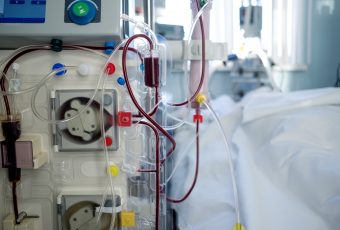SERIOUS ILLNESSES, SHARED DECISION-MAKING | September 17, 2018
SDM Enhances Patient Safety for Serious Illness Care
Reading Time: 4 minutes


Studies estimate that anywhere from 250,000 to 440,000 people in the U.S. die every year due to preventable medical errors. While very little research on patient safety has been done specifically for patients in palliative care, they are more vulnerable to errors and related adverse events. The end-of-life is a vulnerable time. Multiple healthcare transitions, changes in goals of care and misconceptions regarding serious illness care can jeopardize patient safety. Achieving a higher level of safety is possible with shared decision making (SDM).
SDM is a communication process in which the provider shares all relevant treatment risks, benefits and alternative treatments, while the patient shares all preferences and values regarding personal choices. The result is a mutual decision on best care that reflects these components.
Safe care involves “avoiding harm to patients from the care that is intended to help them.” Medical SDM promotes safe care of patients through more effective communication, inclusion of advance care planning, improved understanding, patient engagement and positive patient experience.
Effective Communication

Improving communication with patients using SDM is an effective patient safety strategy across the continuum of care – from the decision to undergo a certain procedure to determining care at the end of life.
A study published in JAMA Internal Medicine found only 30% agreement between the end-of- life care preferences expressed by patients and their families with the actual care that was documented in the medical record. The study concluded that the communication between healthcare professionals and the patients and family members was inadequate. This study prompted a follow-up editorial: “Disregard of patients’ preferences is a medical error.”
As a two-way communication process, SDM encourages an active partnership between physicians and patients. Rather than the decision-making process being one of passive informed consent, it becomes a more collaborative, patient-centered experience.
Meaningful dialogue regarding serious illness care ideally involves thorough and clear communication about what patients and their families can likely expect and what their options are regarding easing symptoms and comfort. It also involves listening to patient concerns and understanding their preferences and values. SDM ensures that the care patients receive aligns with their preferences.
Advance Care Planning

Advance care planning uses SDM to document patients’ goals of care and preferences in the event they lose decision-making capacity, which is often the case during serious illness and at the end of life.
In a recent study, half of chronically ill, older patients had documented advance care planning; however, half of those with completed legal forms or orders had no documentation of discussion. For those who did have a documented discussion, most were not easily accessible.
A case study published by the Patient Safety Network on the AHRQ website, concludes that “failure to explore patient and family wishes, document advance care planning, or communicate key decisions should all be seen as adverse events.”
Ensuring patients’ wishes are honored and their preferences are documented and easily accessible is an essential part of delivering safe care and avoiding harm.
Improved Understanding

Health literacy is a critical patient safety issue. Patients cannot make informed medical decisions if they do not understand the health information that is provided to them.
Health literacy refers to “patients’ ability to obtain, process, and understand the basic health information and services they need to make appropriate health decisions.” The National Academies of Sciences (formerly the Institute of Medicine) estimates nearly half of all American adults have difficulty understanding and acting upon health information.
In order to overcome health literacy or cultural barriers that may impede effective physician-patient communication, SDM should include proven strategies to facilitate understanding, which include:
- Speaking slowly and using plain, nonmedical language
- Using visual aids
- Limiting the amount of information provided and repeating the information
- Using teach-back techniques
- Encouraging patients to ask questions
- Providing patient-friendly educational materials
Patient Engagement and Positive Patient Experience

The SDM process naturally involves patient engagement and often results in positive patient experience. Both factors are linked to improved patient safety. Patient engagement and patient experience are important at any point of an individual’s care spectrum, from routine medical care to end-of-life care.
Patients who are engaged in their care ask questions, share relevant health information and concerns, and are more likely to follow-up and adhere to treatment plans. Lack of engagement can lead to suboptimal outcomes, unmet medical needs and delayed care.
Studies have shown positive associations between patient experience, patient safety and clinical outcomes. Better patient experience is related to better adherence to treatment and medication recommendations, health-promoting behaviors and better medical resource use.
SDM is often done in conjunction with patient decision aids. Quality patient decision aids are designed to provide information in ways that enable the patient to understand their options, the risks, benefits and alternatives to a proposed treatment.
Learn how to overcome common barriers to shared decision making with quality patient decision aids right here.



